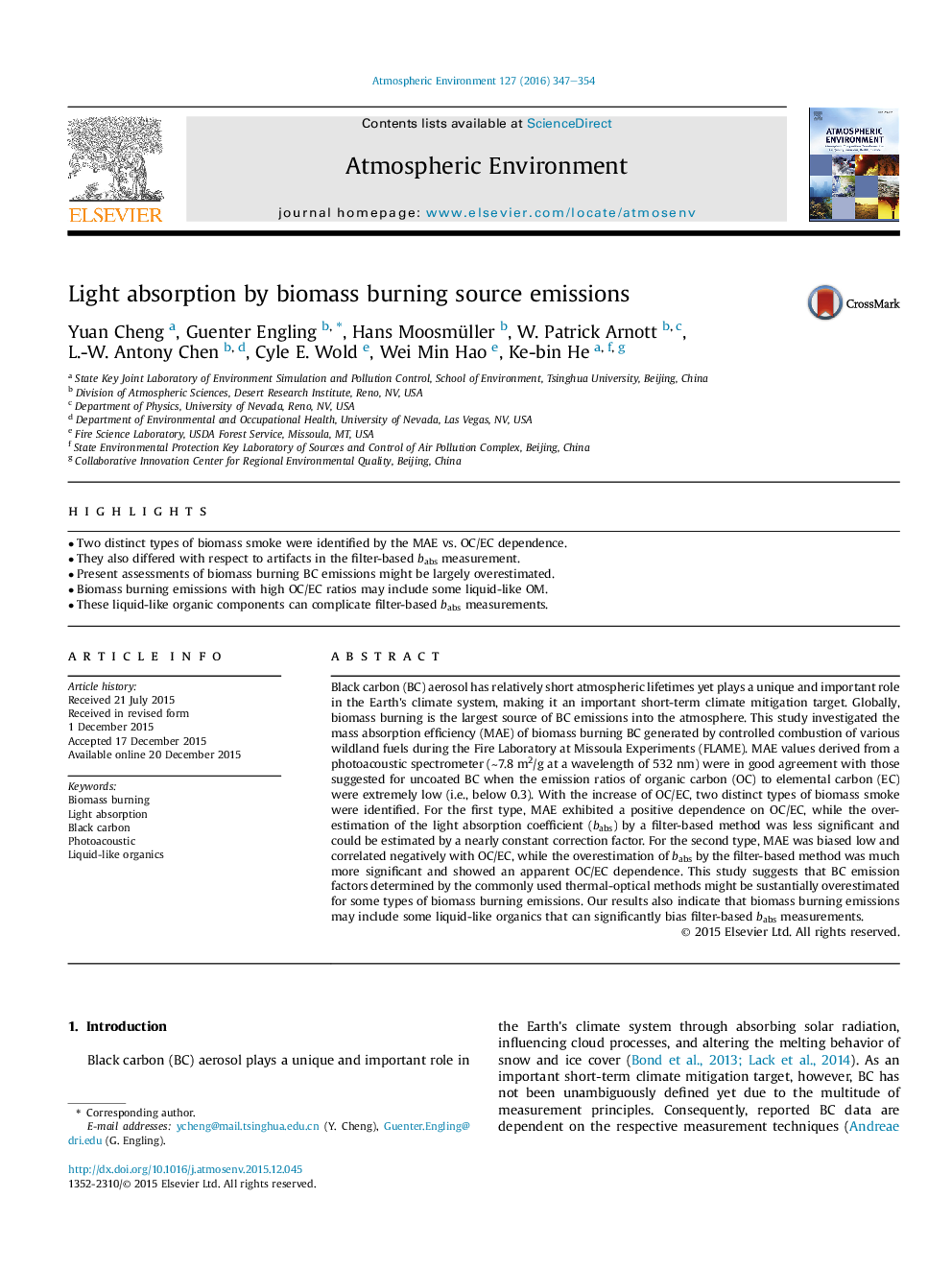| Article ID | Journal | Published Year | Pages | File Type |
|---|---|---|---|---|
| 6336907 | Atmospheric Environment | 2016 | 8 Pages |
Abstract
Black carbon (BC) aerosol has relatively short atmospheric lifetimes yet plays a unique and important role in the Earth's climate system, making it an important short-term climate mitigation target. Globally, biomass burning is the largest source of BC emissions into the atmosphere. This study investigated the mass absorption efficiency (MAE) of biomass burning BC generated by controlled combustion of various wildland fuels during the Fire Laboratory at Missoula Experiments (FLAME). MAE values derived from a photoacoustic spectrometer (â¼7.8Â m2/g at a wavelength of 532Â nm) were in good agreement with those suggested for uncoated BC when the emission ratios of organic carbon (OC) to elemental carbon (EC) were extremely low (i.e., below 0.3). With the increase of OC/EC, two distinct types of biomass smoke were identified. For the first type, MAE exhibited a positive dependence on OC/EC, while the overestimation of the light absorption coefficient (babs) by a filter-based method was less significant and could be estimated by a nearly constant correction factor. For the second type, MAE was biased low and correlated negatively with OC/EC, while the overestimation of babs by the filter-based method was much more significant and showed an apparent OC/EC dependence. This study suggests that BC emission factors determined by the commonly used thermal-optical methods might be sustantially overestimated for some types of biomass burning emissions. Our results also indicate that biomass burning emissions may include some liquid-like organics that can significantly bias filter-based babs measurements.
Related Topics
Physical Sciences and Engineering
Earth and Planetary Sciences
Atmospheric Science
Authors
Yuan Cheng, Guenter Engling, Hans Moosmüller, W. Patrick Arnott, L.-W. Antony Chen, Cyle E. Wold, Wei Min Hao, Ke-bin He,
